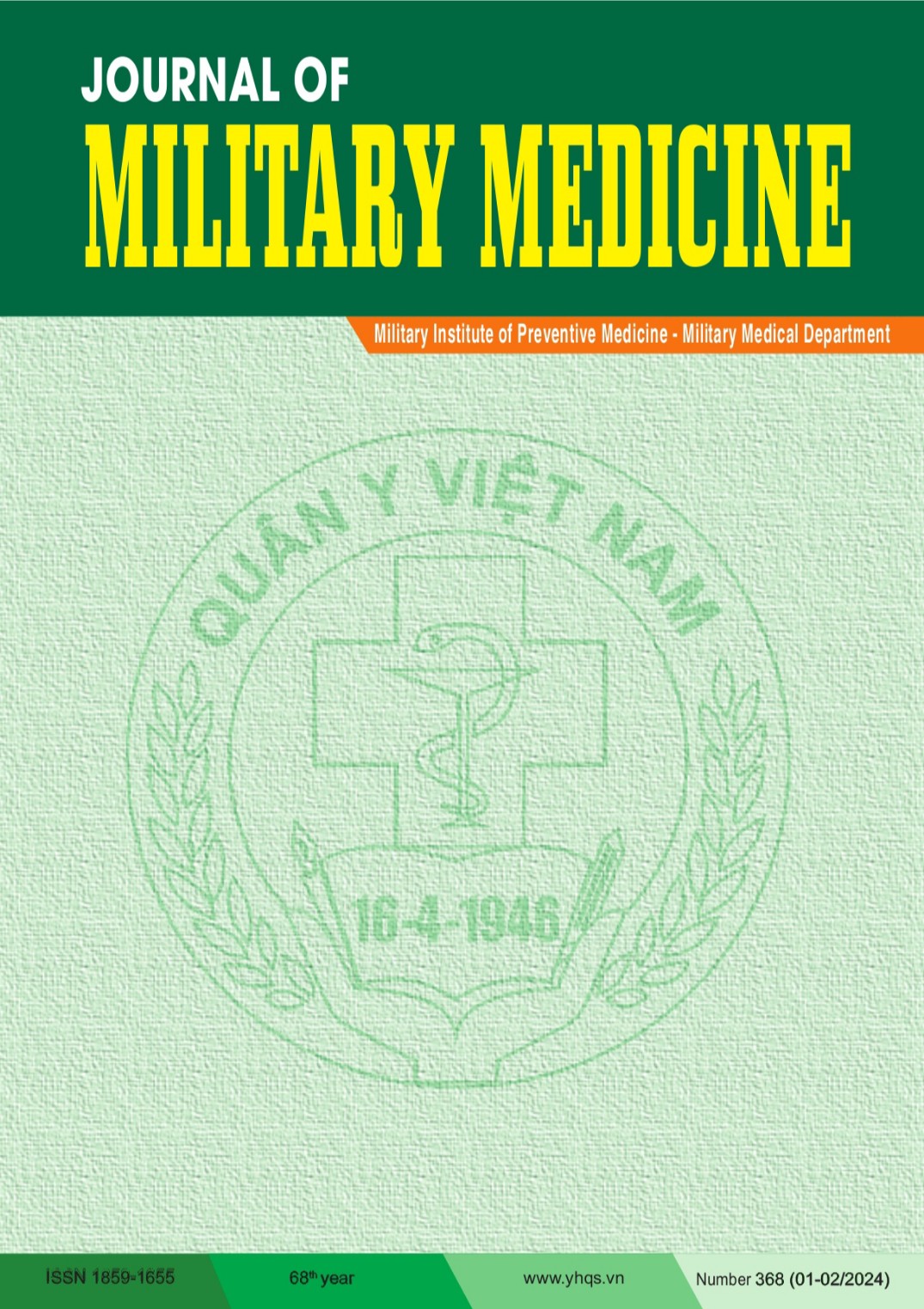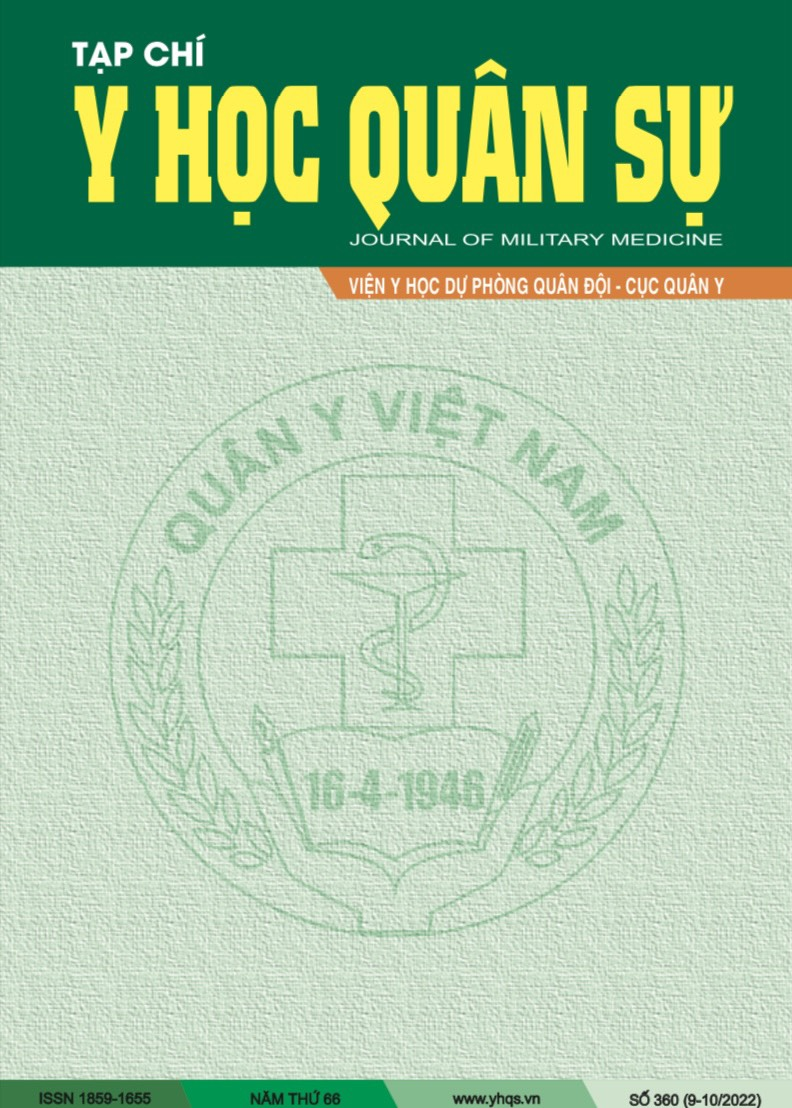ANALGESIC EFFECT OF “DINH THONG PHONG” CAPSULES ON EXPERIMENTAL ANIMALS
DOI:
https://doi.org/10.59459/1859-1655/JMM.278Từ khóa:
Analgesic effect, experimental animals, Dinh Thong Phong capsulesTóm tắt
Purpose: Evaluate the analgesic effect of “Dinh Thong Phong” capsules on experimental animals.
Subjects and Methods: “Dinh Thong Phong” capsules, meeting the standard criteria, were evaluated for analgesic effect on white mice. In particular, the central analgesic effect was assessed using the hot plate model, peripheral analgesic effect was assessed using the writhing pain model.
Results: In the hot plate model, “Dinh Thong Phong” capsules at a dosage of 860 mg/kg and 2,580 mg/kg significantly increased the reaction time to heat (p < 0.001) compared to the control group. The difference in reaction time to heat between the groups using “Dinh Thong Phong” capsules and the group using codeine phosphate at a dose of 20 mg/kg was not statistically significant (p > 0.05). In the writhing model, “Dinh Thong Phong” capsules at a dose of 860 mg/kg and 2,580 mg/kg significantly reduced the number of writhing episodes (p < 0.001) compared to the control group. The difference in the number of writhing episodes between the groups using “Dinh Thong Phong” capsules and the group using aspirin at a dose of 150 mg/kg was not statistically significant (p > 0.05).
Tài liệu tham khảo
Ministry of Health (2022), National Pharmacopoeia of Vietnam, Science and Technology Publishing House, Hanoi.
Department of Science and Training, Ministry of Health (2015), Guidelines for preclinical and clinical testing of traditional medicine, herbal medicines, and herbal materials, issued with Decision No. 141/QD-K2DT on October 27, 2015.
Nguyen Thuy Duong, Thuong Phuong Thien, Hwang In Hyun, et al (2017), “Anti-hyperuricemic, the anti-inflammatory and analgesic effect of Siegesbeckia orientalis L. resulting from the fraction with high phenolic content,” BMC Complementary and Alternative Medicine, 17: 1-9.
Fu Juan, Wang Zenghui, Huang Linfang, et al (2014), “Review of the botanical characteristics, phytochemistry, and pharmacology of Astragalus membranaceous (Huangqi),” Phytotherapy Research, 28 (9): 1275-1283.
Gerhard H. Vogel and Wolfgang H. Vogel (1997), “Chapter H. Analgesic, anti-inflammatory, and antipyretic activity; H.1.2.4. Hot plate method; H.2.0.2. Writhing tests, In: Drug Discovery and Evaluation Pharmacological Assays,” Springer-Verlag Berlin Heidelberg, New York: 370-371.
He Xirui, Wang Xiaoxiao, Fang Jiacheng, et al (2017), “The genus Achyranthes: A review on traditional uses, phytochemistry, and pharmacological activities,” Journal of Ethnopharmacology, 203: 260-278.
Hua Shiyao, Zhang Yiwei, Liu Jiayue, et al (2018), “Ethnomedicine, phytochemistry and pharmacology of Smilax glabra: An important traditional Chinese medicine,” The American Journal of Chinese Medicine, 46(02): 261-297.
Jun Xie, Fu Peng, Lei Yu, et al (2018), “Pharmacological effects of medicinal components of Atractylodes lancea (Thunb.) DC,” Chinese Medicine, 13: 1-10.
Koonrungsesomboon Nut, Na-Bangchang Kesara and Karbwang Juntra (2014), “Therapeutic potential and pharmacological activities of Atractylodes lancea (Thunb.) DC,” Asian Pacific Journal of Tropical Medicine, 7(6): 421-428.
Koster R. (1959), “Acetic acid for analgesics screening,” Fed proc, 412-417.
Salehi Bahare, Sener Bilge, Kilic Mehtap, et al (2019), “Dioscorea plants: a genus rich in vital nutra-pharmaceuticals-A review,” Iranian Journal of Pharmaceutical Research: IJPR, 18 (Suppl1): 68-89.
Shang Xiaofei, Pan Hu, Wang Xuezhi, et al (2014), “Leonurus japonicus Houtt: ethnopharmacology, phytochemistry and pharmacology of an important traditional Chinese medicine,” Journal of Ethnopharmacology, 152(1): 14-32.
Woolfe Gand and MacDonald A.D. (1944), “The evaluation of the analgesic action of pethidine hydrochloride (Demerol),” Journal of Pharmacology and Experimental Therapeutics, 80 (3): 300-307.
Zhang Xuenong, Zhao Wenwen, Wang Ying, et al (2016), “The chemical constituents and bioactivities of Psoralea corylifolia Linn: a review,” The American journal of Chinese medicine, 44 (01): 35-60.
Tải xuống
Đã Xuất bản
Cách trích dẫn
Số
Chuyên mục
Chấp nhận đăng 21-02-2024
Ngày xuất bản 28-02-2024



